When seen in their native habitat, antennas can be challenging to recognize due to the amount of objects in their immediate vicinity. The intent of this section is to deconstruct that complexity by showing the antennas in isolation.
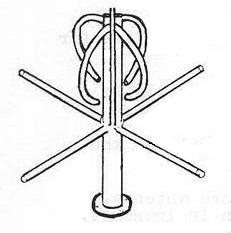 |
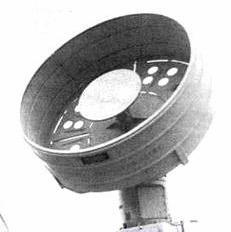 |
| AS2815/SSR-1 satellite broadcast antenna. Four units needed. (Canadian Navy image) | AS 3018/WSC1 satellite communications antenna. Two units used with WSC-x radio system. (Canadian Navy photo) |
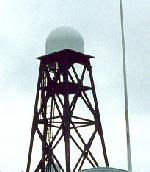 |
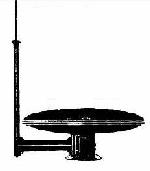 |
| AS-1747/URN TACAN antenna atop a lattice mast. Used with AN/URN-20 TACAN. It could also be mounted on a pole mast (Photo by Jerry Proc) | AS3240/OE273 antenna used with AN/URN-25 TACAN. Sits atop the foremast. (Image courtesy ComNav Electronics) |
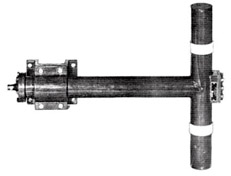 |
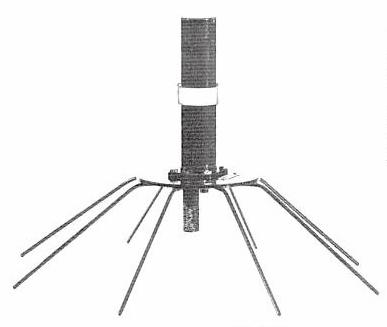 |
| AS-5042 URC/AT-150/SRC. UHF antenna 200-400 MHz. (USN photo) | AS_5041 URC/AT-390/SRC. UHF antenna 200-400 MHz. (USN photo) |
WLR-1C COUNTERMEASURE RECEIVER ANTENNAS
Click to enlarge
To assist in intercept, Canada also used an extra Band 9 tuner called the AN/SLR-503. This was fitted to IRE and 280 Class vessels.
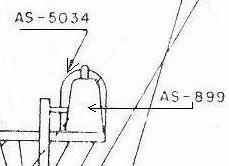 |
AS-5034 antenna for WLR-1C receiver. Found on a 257-class training aid drawing. This may have been the predecessor to the AS-5043. (Canadian Navy drawing) |
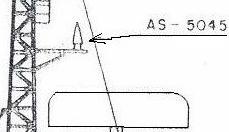 |
AS-5045 antenna for WLR-1C receiver. Found on a 257-class training aid drawing. This may have been the predecessor to the AS-5050 antenna. In at least the 257 class, the AS-5045 and AS-5050 antennas were fitted simultaneously. (Canadian Navy drawing) |
 |
| Jezebel antenna (port and starboard sides) for the reception of sonobuoy transmissions in the range of 162.250 to 173.50 MHz. Line of site range up to approximately 15 nm on a "good day". These antennas were connected to a pair of AN/ARR-52 FM sonobuoy receivers. The Canadian Navy was the first navy to try this on a ship platform in addition to air (Argus/Aurora aircraft). It was fitted on all steamers, 280s, and CPFs, although the latter has more capability now. (Photo by Sandy McClearn) |
| This might be an antenna for a met rig. Can anyone confirm? Contact: jerry.proc@sympatico.ca (Photo by Sandy McClearn) |
|
|
|||
| NAME | FREQ. RANGE | USE | REMARKS |
| Vertical Wire | 530- 1605 kHz
87 to 108 MHz |
Entertainment
Entertainment |
Differs on various ships. |
| OFM-1 | 87 to 108 MHz | Entertainment | |
| TV Antenna | VHF-UHF | Entertainment | Atop foremast on IRE class. |
| Tx Monocone | 2 to 6 MHz | General Purpose Tx | Common broadband wire antenna. Several transmitters could feed one antenna. |
| 28 foot metallic whip | 2 to 30 MHz | General Purpose Rx | On most ships, it was replaced by the Rx fan. |
| 35 foot fibreglass whip | 2 to 30 MHz | General Purpose Tx | When used with AN/URC 505, frequency
range is 1.6 to 30 MHz and on the IRE class, the receiver is also fed from this antenna. |
| AS 1829 | 30 to 75.95 MHz | Tx/Rx | Used with VRC 49 |
| AS 1018 | 225 to 400 MHz | Tx/Rx | Common antenna. Replaced by AS 5104 |
| AS 1086/SRC22 | 132-151 MHz | Tx/Rx | |
| AS 1729/VRC | 30 to 75.95 MHz | Tx/Rx | Found on 280 class |
| AS-5058/SRA505 | 156-173 MHz
225-400 MHz |
Tx/Tx | Used on DDE/DDH class ships |
|
|
|||
| List 5 | List 6 | List 7 | |
| LEGEND:
ISL= Improved St. Laurent Class IRE= Improved Restigouche Class MACK= Mackenzie Class |
ANS= Annapolis Class
TRIBAL = 280 Class AOR = Supply ships SUB= Submarine |
||
 |
| This photo captures the WSC-1 antennas aboard HMCS Iroquois and at least one of wire fan antennas on the starboard side. (Photo by Len Carriere) |
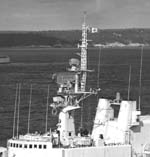 |
Note the whip antenna arrangement aboard HMCS Margaree as seen in 1969. Click to enlarge. (Photo via Sandy McClearn) |
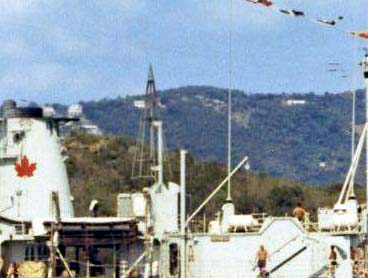 |
| HMCS Gatineau was fitted with a discone antenna which is situated in the centre-left of the photo. Gatineau appears to be the only Restigouche class ship fitted with this type of antenna but it was removed during her DELEX refit. It is believed that both Gatineau and Fraser were fitted with a different ESM for a far-east mission. Can anyone provide more data? What is the frequency range and purpose of this antenna? Contact: jerry.proc@sympatico.ca. (Part of a Naval Museum of Alberta photo) |
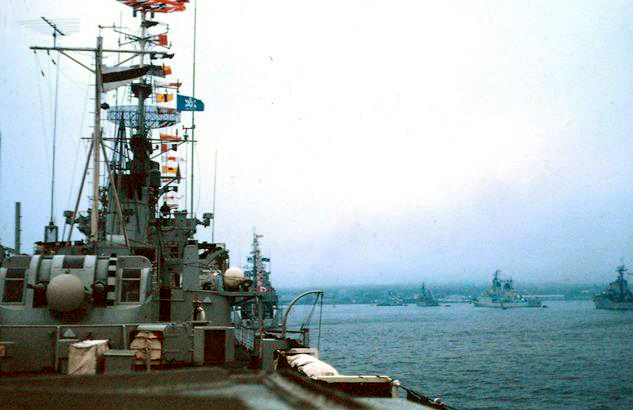 |
| Taken in 1967 from Gatineau's quarterdeck, here is another view of the discone antenna. It just happens to be superimposed over the main mast. Mounted on a rotor, is a Channel 2 to 13 TV antenna which can be seen on the aft port yardarm. It was erected when the ship was in harbour and taken down prior to the ship departing for sea. (Photo by Ronald J. MacDonald) |
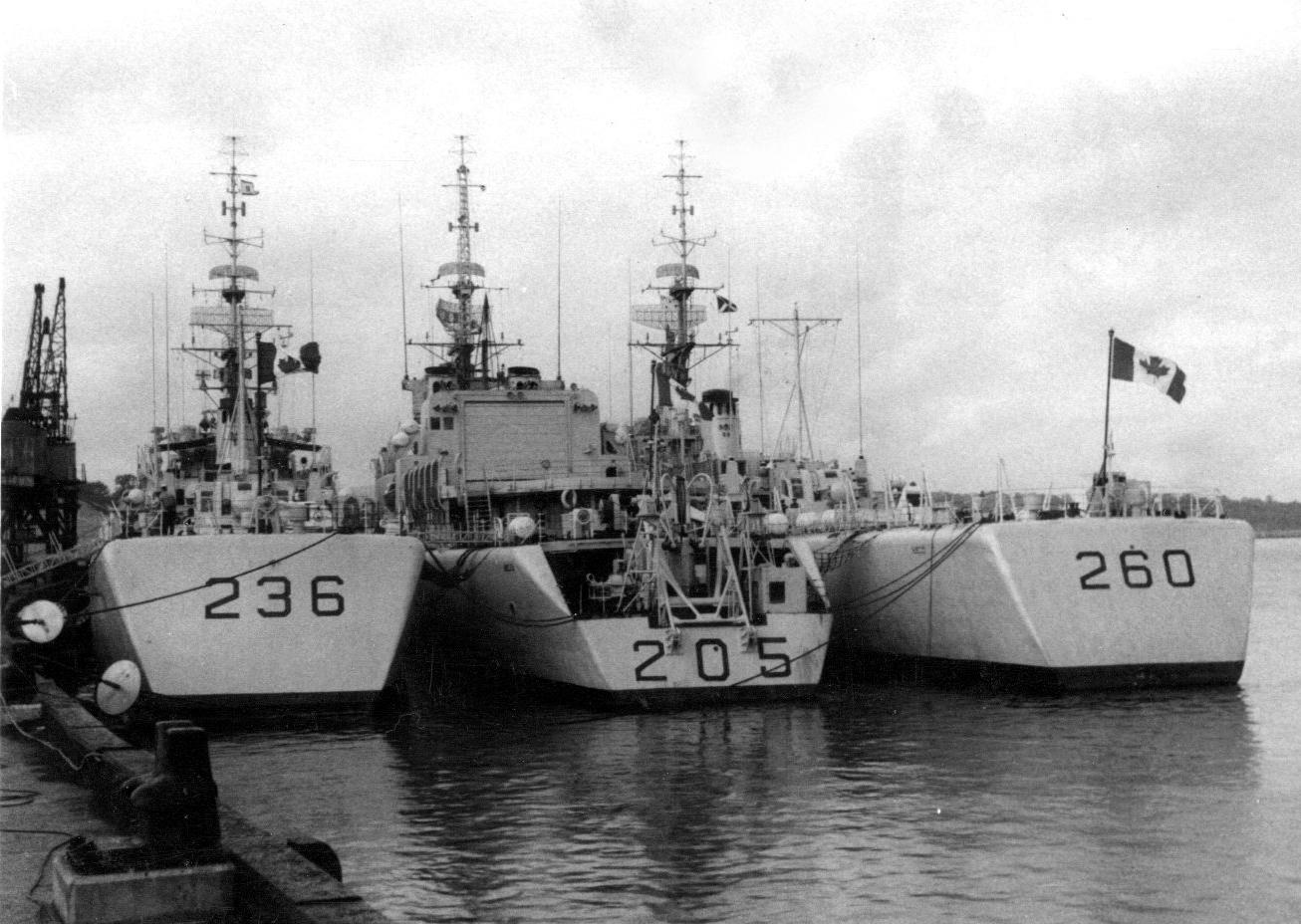 |
| Taken in June 1966, the discone antenna can also be seen atop the helicoter hanger on HMCS St. Laurent (205). The St. Laurent was also fitted with a test Variable Depth Sonar (VDS) prior to her conversion as a DDH. (Photo by David Hill ) |
TELEVISION RECEPTION ABOARD HMC SHIPSJim Dean, VE3IQ. adds this comment regarding shipboard television reception during the time he served.
"The navy fitted all ships with a Ship's Radio Entertainment (SRE) system that provided news nd music while ships were at sea. However, as TV grew, many ships elected to use their ship's fund or some such money source to purchase TVs. I know that we did that when I was in HMCS Skeena 1963/64. The TV was very popular in harbour, particularly with the duty watch, but a rotatable antenna was needed because the location of the transmitters had to be located in each port. I don't think an A&A or SHIPALT was ever raised for a TV system. I suspect that the TV, antenna, and distribution system were all adhoc in Skeena. We had TVs as part of the formal entertainment suite in the IROQUOIS class (1972), although I think that the TVs were provided by NPF".
Jim goes on to explain the acronyms used in the comment above:
A&A = Alteration and Addition
CANAVMOD (Canadian Naval Modification)
NPF = Non Public Funds
SHIPALTt = Ship AlterationThe navy has a process to control the configuration of a ship and of a class of ships (which should all be the same). Whenever a new piece of equipment is to be installed in a ship, the engineering work and installation drawings are developed and when approval is given for the installation, the timing and availability of the equipment and the ship are important factors. Usually the installations are made during a refit or a scheduled work period. The formal documentation when I joined the navy in 1955 was called an A&A. Each A&A had a number so staff could check whether a given ship had it. For some reason, which I do not know, the term A&A was changed to SHIPALT, sometime in the 1960's, I believe.
SHIPALT was essentially a change to fitted equipment that impacted its surroundings as opposed to an internal modification (CANAVMOD) to said equipment.
Any officer who has served in a ship in a technical capacity can tell you of horror scenarios when a team arrived to install equipment under an approved SHIPALT, only to find that the space designated was occupied by some unauthorized hardware. Many is the engineer whose impatient captain said "I want this and this where I want it installed, right now". The operators may have had good reason for wanting the equipment to be installed in a certain spot but they sure circumvented the system. It was always this way, and I suspect that it still might be. .
Non Public Funds are exactly that. The money does not come from the Crown, but just the same, the navy requires that all monies in a ship or base are managed, audited and accounted for. Typically in a ship, the main NPF fund would be the Ship's Fund which provides amenities for the ship's company at the discretion of a Ship's Fund Committee. Much of the Ship's Fund comes from the profits of a the ship's canteen.
Contributors and Credits:1) RCN's AOR/TRBL/ISL/265/IRE/MACK Class Equipment Handout. September 1985.
2) Tom Brent <tgb(at)telus.net>
3) RCN's N.E. Tech TQ6B Common Equipment Manual
4) Pat Barnhouse <pat.barnhouse(at)sympatico.ca>
5) Alexander "Sandy" McClearn <smcclearn(at)ns.sympatico.ca>
6) Mac's Naval Photography http://macsnavylinks.ca
7) Mike Aris (CPO1 Sonarman, ret 1989) <beejm2(at)yahoo.ca>
8) Ronald J. MacDonald <ronald.macdonald(at)cogeco.ca>
(9) Jim Dean VE3IQ, <jgdean(at)sympatico.ca>
10) Timothy Taylor <quappelle264(at)gmail.com>]
Jan 20/15